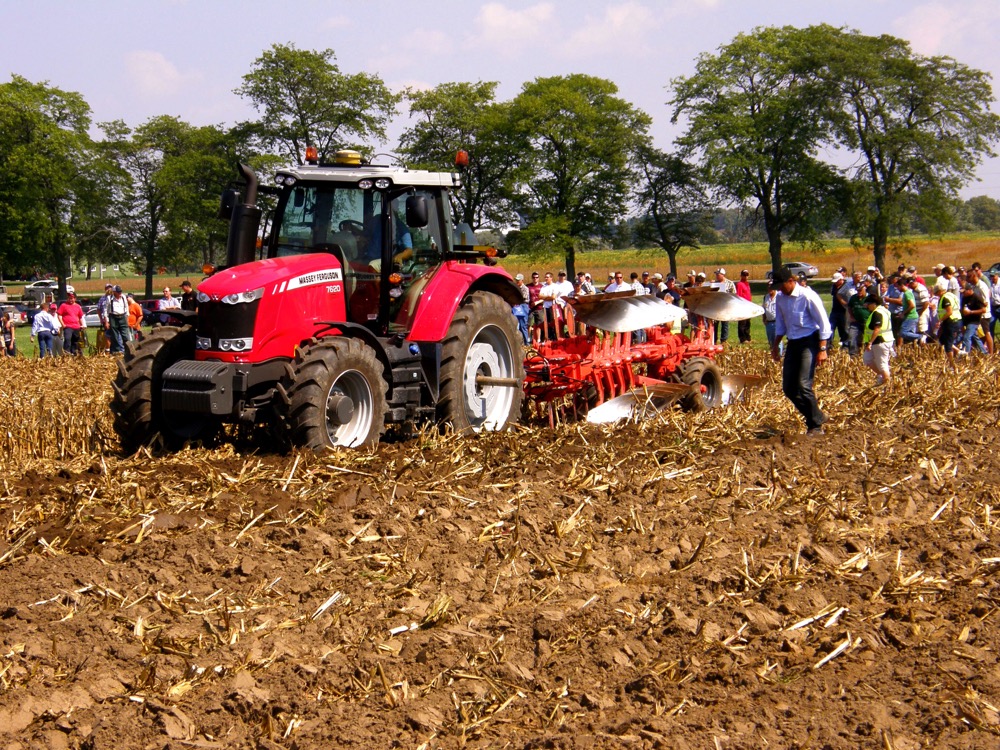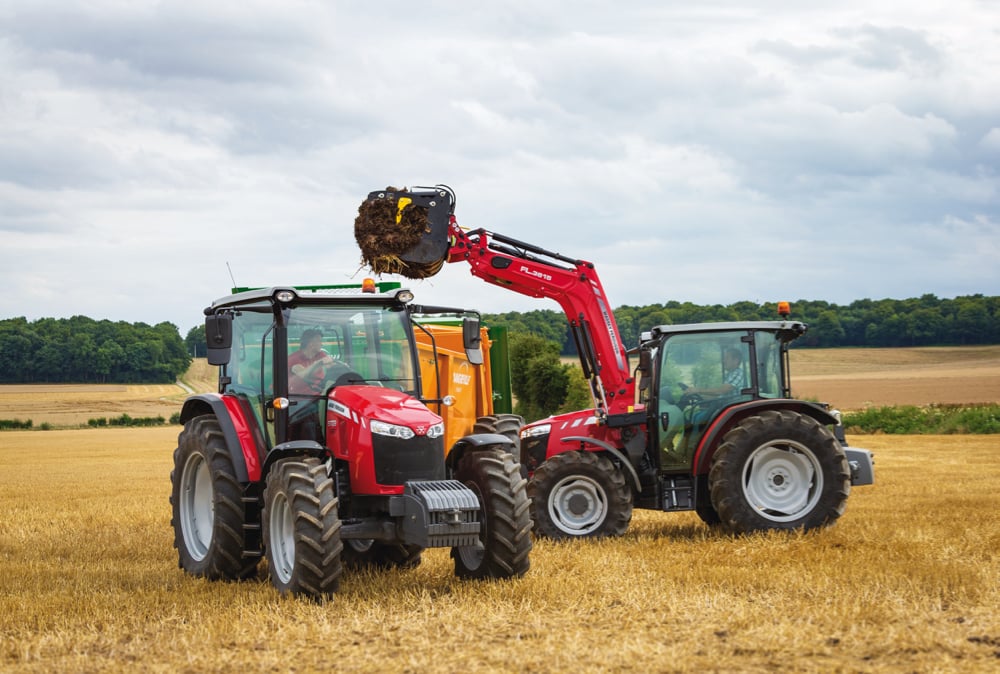As a machinery editor, one of the places where I’ve come to feel most at home is in the aisles of a farm equipment show. I’ve logged many miles walking those aisles in the last few years. But I’ve also come to learn that those aisles aren’t all the same. Clearly, not all farm shows are created equal.
Below, I’m going to talk about a new show that will be launched this July in Western Canada. Before I start, however, you should know that this new show is owned by the same company that owns Country Guide, i.e. Glacier FarmMedia. I don’t think this relationship has coloured my thinking, nor was I asked or ordered by my bosses to write this story, but you should keep it in mind.
Read Also

Riding the tariff rollercoaster
Farmers are accustomed to roller-coaster years. But the current geopolitical windstorm is something else entirely. On his cattle operation near…
The goal of this column is to write about the manufacturing, marketing and buying of farm machinery, so the new show seemed a topic I just had to investigate. In its own way, it may change the landscape.
Because farm equipment displays require so much square footage, fitting the shows into general-purpose exhibition facilities can be complicated. It usually leads to displays being spread throughout entire civic complexes made up of hockey arenas, barns, exhibition halls and outdoor spaces. So, getting around requires a map, even at minor shows.
At one particular show I’ve attended, the relatively narrow hallways were packed to claustrophobic proportions with crowds of farmers all trying to go in opposite directions. It made getting lost occasionally almost inevitable.
Of course if you are a gearhead, you could argue that being temporarily lost in a sea of high-tech farm equipment is far from a disconcerting experience.
Then there are shows like Germany’s Agritechnica that also require a visitor map, simply because they are, by any standard, enormous. In 2013 that event filled 26 massive buildings on a show ground that covered over 100 acres. It even uses city transit buses to help people get around.
The bulk of events that farmers get a chance to visit are shows based on static displays, housed indoors whenever possible. These shows are great opportunities to conveniently comparison shop, with competing machines all in the same vicinity and product experts beside them who are eager to tout their brands’ advantages.
But there are also shows like The Farm Progress Show in the Midwestern U.S. or Canada’s Outdoor Farm Show in southern Ontario where you can see for yourself what the equipment can actually do, or at least get a good idea. These events feature various categories of equipment at work in fields.
Western Canada itself hasn’t had that kind of show since the Winnipeg Motor Trials ended at the start of the First World War. As of July 21 this summer, however, that will change. Glacier FarmMedia is launching Ag in Motion, a completely new, three-day farm show near Saskatoon. Organizers think what will make this event stand out is its very large, 320-acre footprint, which means large-scale equipment will be able to do actual field work as visitors look on.
“When you look at other jurisdictions around North America, they have an outdoor show somewhere,” says Rob O’Connor, show manager for Ag in Motion. “They’re also very successful in Europe. What we have in Western Canada is a lot of indoor shows in the winter, and that’s convenient timing when people are obviously not on the land. But you certainly don’t get that opportunity to see the equipment working.”
The Ag in Motion show will provide plots of land for both equipment manufacturers and companies focused on crop production to demonstrate equipment or show test plots.
“This is that opportunity for equipment and for crops,” O’Connor says. “We can see different demonstrations, whether it’s crop plots or equipment working in the field. We’re very fortunate, because we’ve acquired a half-section of land, so there’s more space here to do those kinds of demonstrations than probably anywhere else you’ll see a show.”
The event will accommodate those in-field attractions in a couple of different ways. For firms that want to show the results of crop production products or practices, like fungicides or seed genetics, the show will give them access to test plots at the start of the season. They can plant crop varieties in the spring and develop them through the growing season until the show opens.
“They can put in their varieties or a couple of varieties and use different fertilizer techniques and demonstrate that,” explains O’Connor.
The late-July show date will allow crops to mature enough to give show-goers a good idea of their yield potential.
“On the equipment side, there’ll be a few different options for companies,” O’Connor continues. “One is they can purchase a larger booth space on the perimeter of the show, which we call a ride-and-drive space. They can do some small-scale demonstrations within their own booth. But if they want to do a large-scale demonstration where a person can actually get in and drive a piece of equipment, there’ll be a large demonstration area as well.”
The Agricultural Manufacturers of Canada (AMC), an organization that represents Canadian ag equipment builders, has just announced Ag in Motion will become its official western Canadia event.
“Farm equipment shows are very important to ag equipment manufacturers and they budget yearly for attendance at these shows,” says Jerry Engel, president of AMC. “Many AMC members have already expressed an interest and/or intent on displaying their products at this show.”
Their primary motivation is to show farmers just what the equipment can do. With most high-value farm machines being sold on the basis of factory orders, farmers are often unable to see first hand exactly what the equipment is capable of before they write the cheque for it.
“Field demonstrations have proven very popular at the Woodstock, Ont., show for years, even though it has limited land available,” Engel says. “Ag in Motion is bringing the field demonstrations to a new level, with at least 320 acres of land available for exhibitors.”
“There is definitely that need for a hands-on experience,” says O’Connor. “Whether you’re buying a car, buying a tractor or deciding on your crop inputs, there’s a much better opportunity to make that decision after you’ve had that experience, whether it’s a test drive or seeing it growing in the field.”
And because of the outdoor venue, manufacturers can avoid the problems involved when trying to fit massive equipment into buildings not originally intended to allow them access.
“Having a half-section gives us a lot more space for demonstrations and it also gives companies the opportunity to have a larger booth space to showcase all their equipment, too,” O’Connor continues. “Out here in Western Canada, equipment is pretty much the largest in the world, so it takes a lot of space to show it off. I know that can be a big concern for companies at indoor shows, where doors aren’t big enough to get the equipment inside or they just can’t acquire enough space to bring their entire lineup.”
By late February, show staff were still in the process of feeling their way through the initial layout and organization for the event. With a lot of land to make available to exhibitors, and no carved-in-stone site plan, O’Connor says the staff is willing to make changes on the fly to accommodate exactly what those companies signing up to participate want to do.
“Here, we’re starting from the ground up,” O’Connor says. “So if company X, for instance, wants 300 feet of frontage, we have that available for it. We have laid out what I’ll call a Plan A. Depending on how that space fills up, we could go to a Plan B with a larger trade show area. And that’s the beauty of having a half-section of land. We can evolve this show to meet the needs of the manufacturers, dealers and crop input companies.”
The show will only allow temporary structures on the site for the first year. After evaluating how the first year’s layout worked, organizers will settle on a final site plan. O’Connor says the show will then begin to allow the construction of permanent buildings by those who plan to be annual exhibitors.
“I think we’re on a good track,” O’Connor says.” We have a ways to go, but the companies that are signing up are taking much more space than expected.”

















